Diversity, Equity & Inclusion Terminology & Concepts
Introduction
What is Diversity? It is simply the ways in which people are different or similar. But it is also so much more than that. Diversity is an understanding of difference and of inequity, and of power and privilege. It is the understanding that a diverse community is stronger, richer and more sustainable than one which excludes people who are different.
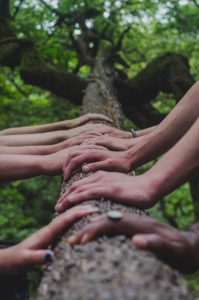
The learning outcomes in this chapter are designed to support a solid understanding on some common diversity, equity and inclusion terms and concepts, so that learners can proceed from a place of shared place of awareness.
If Diversity asks who is in the outdoors with us…
Then Equity asks who would like to participate in outdoor activities but can’t. What are the barriers to participation?
Inclusion asks if everyone’s ideas have been heard, respected and understood.
Belonging asks if everyone feels values through positive connections with others so they can show up in the outdoors as their true and authentic self.
The traditional approach to understanding equality is based on the idea that it can be achieved by providing identical treatment to all individuals, regardless of their actual circumstances. With this approach, individuals or groups are given the same resources and opportunities. Equality is a one size fits all approach, with easier solutions to implement. However, as shown in the image, equality does not always address the specific barriers a person is facing. People have different needs because of their physical or mental abilities, race, ethnicity, creed, gender, sexual orientation, etc. When these needs are not recognized, the unequal effects that identical treatment can produce are ignored. Treating everyone the same does not take into consideration their histories of exclusion or restricted access to resources and opportunities, which in turn perpetuates group-based inequalities.
An equity-based approach requires us to acknowledge that based on the variety of lived experiences, individuals face different barriers. This includes the social, economic, political and legal realities affecting the individual or group in both historical and contemporary contexts. As such the solutions implemented should be tailored to address the specific needs of each individual or community. In the image below, this is depicted as providing each person with the appropriately sized box. Equity solutions require more time to implement because you must do background research on each underrepresented group and develop individualized tools and resources.
Justice-oriented solutions are necessary when the root cause of inequality lies in societal systems. Justice requires us to think systematically about how current societal norms and ways of doing things are creating inequalities. Achieving true equality may require us to change rules and practices that appear to be neutral but, in fact, when applied have a disproportionately negative effect on groups of people. In the image, the fence is the root cause of the inequality and and the solution is to remove it. Justice oriented solutions take time to implement and can be more costly as it requires a systemic change; however, the benefit is that we remove all causes of inequality making a more accessible and just experience for all.
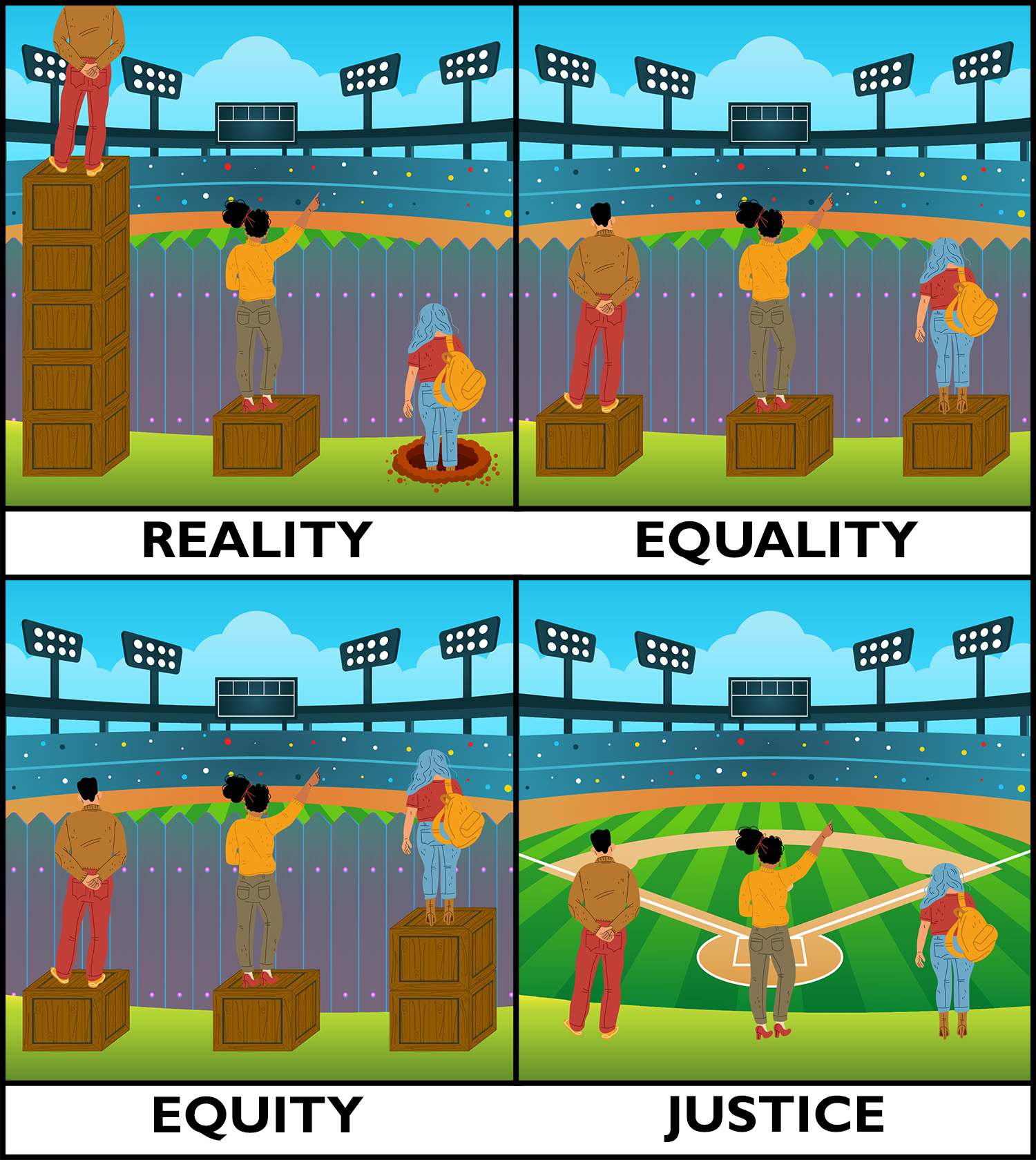
Journal Prompt
Consider some groups that you currently work with or are trying to connect with, that have struggled to access your program. The “But why” technique is one method used to identify underlying causes of a community issue. These underlying factors are called root issues. The “But why” techniques digs into a problem by asking questions to find out what caused it. Each time an answer is given, follow-up “But why’s” are asked for the previous answer.
Can you define the main challenge?
- But why? Because…
- But why? Because…
Could that have been prevented? (Consider actions that could have been taken in your answer.)
- How?
- But why haven’t we tried this action? Because…
- But why? Because…
Keep asking “But why” until you reach the root cause.
Inclusion and Tokenism
Inclusion is knowing that what makes you different is respected and valued. Shore et al. (2011) propose in their paper, Inclusion and Diversity in Work Groups: A Review and Model for Future Research, that uniqueness and belongingness work together to create feelings of inclusion. Groups and individuals with different backgrounds are culturally and socially accepted, welcomed, and equally treated.
In outdoor spaces it is common to have a high sense of belonging which is created through close living conditions and strong community with co-workers and participants. However some professionals that identify as 2SLGBTQIA+ navigate these social environments by concealing their identity (Heath & Duffy, 2023). In order to be treated like an insider you must minimize the things that make you different from the norms of the dominant culture (a low sense of uniqueness.) This is referred to as assimilation, which reflects situations in which an individual who is unique is treated as an insider when they conform to the dominant norms of the culture (Heath & Duffy, 2023).
Tokenism is the practice of including just one member of a minority group in the majority. It can happen when there is a high value in the uniqueness but a low sense of belongingness. This visibility often comes with the scrutiny and pressure to represent or speak for the entire equity-seeking group. The criticism with tokenism is that it only gives the appearance of diversity. An example is representation within media campaigns, where a member of a diverse group is featured in advertising photos, but the company’s workforce has very little representation of equity-seeking group members.
Journal Prompt
- What experiences have shaped who you are today?
- What perspectives were you raised with or do you hold now that impact who you are?
- Think about a time when you were the only person with a given characteristic in the entire room (such as the only male or female, the only person not wearing a costume when everyone else was dressed up). Did you experience any discomfort at not fitting in? Write about your experience.
Dimensions of Difference
What are some of the dimension of diversity? It can be anything that has been historically used to differentiate groups, such as ethnicity, gender, religious beliefs or socio-economic status. Some of these dimensions are more visible than others, and some are more salient in Canada than in other parts of the world. Dimensions of diversity can be broken down into two categories – primary dimensions, which can’t be changed, and secondary dimensions, which we have some control over.
Racialized populations: Indigenous, Black, People of Colour
- This term is used to acknowledge that not all people of colour face equal levels of injustice. IBPOC places Indigenous communities are the forefront, acknowledging their experience and unique relationship to colonialism in Canada.
- BIPOC is a widely accepted acronym, that acknowledges the Black and Indigenous Peoples have been impacted by and interact with systems of oppression in a way that is unique to these communities. However it is not without problems. It is still a way to group non-white individuals into one group and it equates the experiences of people of colour as the same. Racialized is an alternative that has growing acceptance.
- Ontario Human Rights Commission takes an official stance on the term “people of colour” being outdated, stating: “Recognizing that race is a social construct, the Commission describes people as ‘racialized person’ or ‘racialized group’ instead of the more outdated and inaccurate terms ‘racial minority,’ ‘visible minority,’ ‘person of colour,’ or ‘non-White.
People with Disabilities/Diversabilities
- In recent years the parameters of this group have been refined to become more expansive and representative of the scope of diverse-abilities. It includes visible and physical, as well as invisible diverse-abilities, such as cognitive differences, neuro-diversity, and mental health.
- There has also been a reclamation of terminology like: deaf, blind, disabled etc. It is important to note that this is by the community rather than for others to use.
- The number of people self identifying under this umbrella is growing as language evolves and becomes more expansive.
- The World Health Organization reports that around 15 percent of the world’s population, or an estimated 1 billion people, live with disabilities. They are the world’s largest minority.
- New findings from the 2022 Canadian Survey on Disability (CSD) showed that 27% of Canadians aged 15 years and older, or 8.0 million people, had one or more disabilities that limited them in their daily activities. The rate of disability in Canada has increased by 5 percentage points since 2017, when 22% of Canadians, or 6.2 million people, had one or more disabilities (Statistics Canada, 2023).
- Among persons with a disability, the most common disability type in 2022 (as it was in 2017) was a pain-related disability.
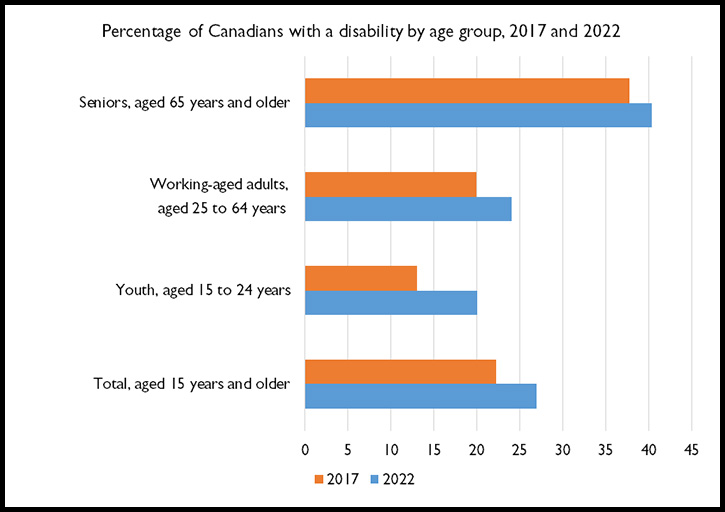
WatchMy Body Doesn’t Oppress Me, Society Does |
2SLGBTQI+ community
- 2SLGBTQIA+ terminology is evolving. As a result, it is important to note that this list is not exhaustive and these definitions are a starting point for understanding.
- There are many variations of the acronym which can be regionally specific.
- 2S refers to Two-Spirit and is an English term used to broadly capture concepts traditional to many Indigenous cultures. It is a culturally-specific identity used by some Indigenous people to indicate a person whose gender identity, spiritual identity and/or sexual orientation comprises both male and female spirits. (Government of Canada, 2SLGBTQI+ terminology)
- “L” stands for Lesbian: Typically a woman emotionally, romantically or sexually attracted to other women.
- “G” stands for Gay: A person who is sexually and/or romantically attracted to people of their same sex or gender identity. Traditionally this identity was reserved for men, but it has been adopted by people of all gender identities.
- “B” stands for Bisexual: People attracted to more than one gender.
- “T” stands for Transgender: A person whose gender identity differs from what is typically associated with the sex they were assigned at birth. Being transgender does not imply any specific sexual orientation.
- “Q” has two meanings. First, queer is a catch-all to include those who do not identify as exclusively straight and/or folks who have non-binary or gender-fluid identities. Queer was once used as a slur but has been reclaimed by some in the community. “Q” can also stand for those questioning their identity.
- In addition to 2SLGBTQ, some also add the letters, “I” and “A.” which stands for Intersex and Asexual respectively
- The “+” symbol: Leaves room for the other sexual identities and orientations not covered in the acronym.
- Making fun of the length of this acronym can have a trivializing or erasing effect on the group that longer acronyms seek to actively include
Deeper DiveIf you’d like to dig deeper or might find a glossary handy, PFLAG provides a comprehensive glossary of 2SLGBTQ+ terminology here: https://pflag.org/glossary/
|
|---|
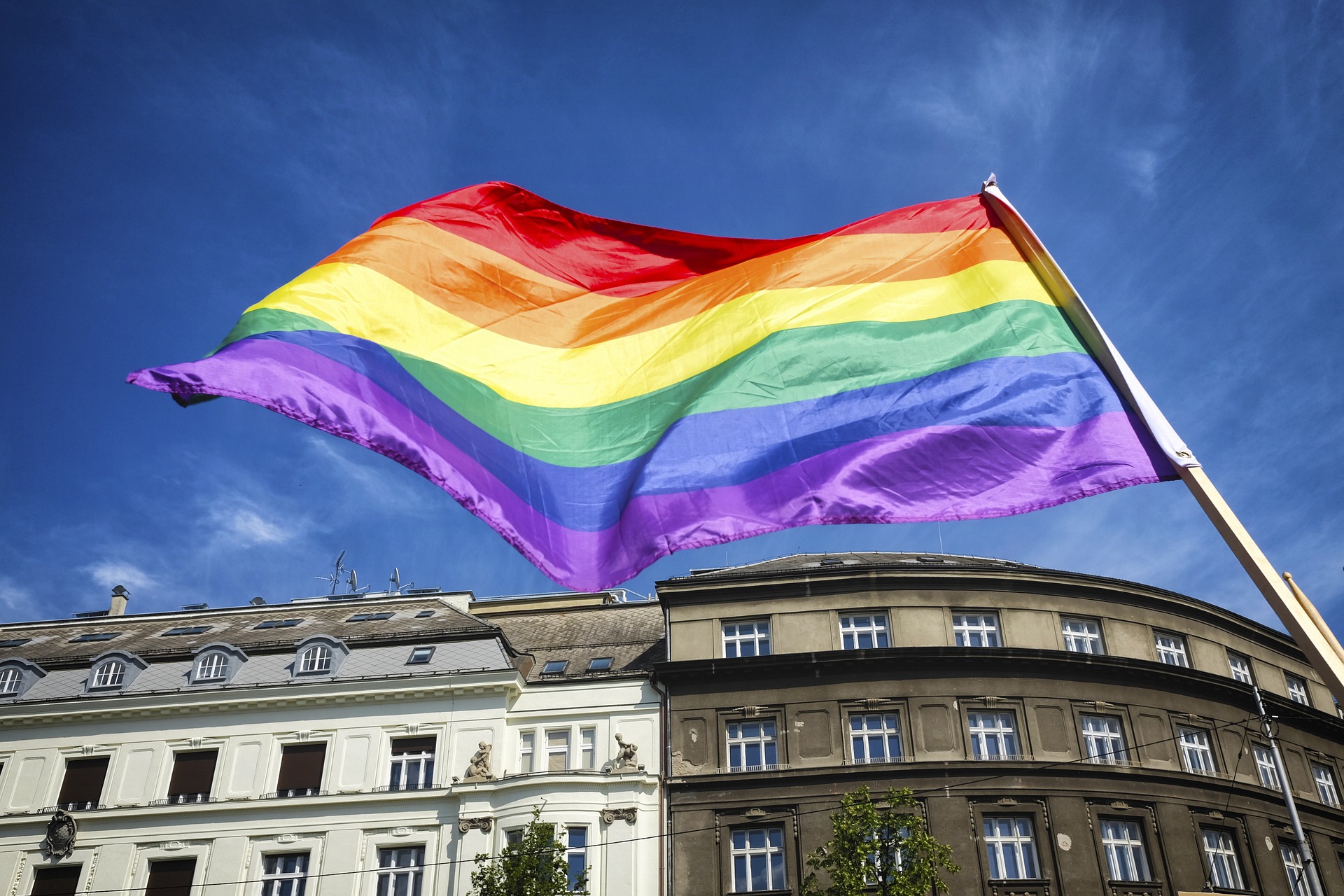
Fundamental Diversity, Equity & Inclusion Concepts
Below are an introduction of a few foundational concepts. This is not a comprehensive review of all diversity, equity and inclusion topics, but rather an introduction that will be built upon in subsequent chapters.
Ally
Ally is defined as a person in a ‘dominant group’ who recognizes their privilege (based on gender, class, race, sexual identity, ability, etc.) and works in solidarity with oppressed groups in the struggle for justice (Melaku et al. 2020). This is achieved through personal relationships and public acts of sponsorship and advocacy. It is about being an active and consistent advocate, being willing to own your own privilege, accepting feedback and committing to a lifelong journey of learning. Being an ally is not an identity we get to claim!
A well-known example is American sprinters Tommie Smith and John Carlos during the award ceremony at the Mexico Olympics who protested against racial discrimination. They went barefoot on the podium and raised a gloved fist with heads bowed during the anthem.
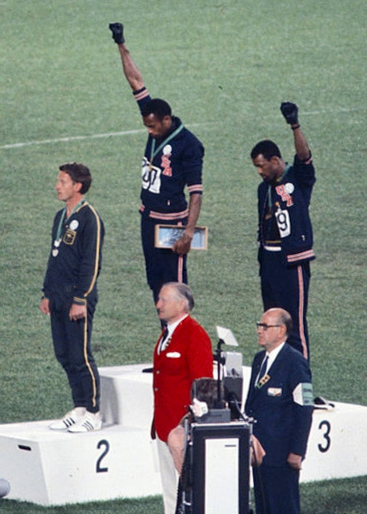
Journal Prompt
- A student in your class, who identifies as a woman, keeps being interrupted, what do you do?
- After a non-binary student in your program made their pronouns clear, your co-instructor continuously misgenders them. What do you do?
Bias
![]()
There are many ways to consider bias. It can be a lack of objectivity when looking at something. Another way to view bias is the favouring of or against one person, group or thing compared with another, usually in a way considered to be unfair. A bias can be both intentional (conscious) and unintentional (unconscious).
Implicit Bias occurs automatically and unintentionally. It is usually when we have certain attitudes (for or against) certain groups of people or associate stereotypes with them without our conscious knowledge.
WatchImplicit Bias: Peanut Butter, Jelly and Racism
|
Decolonization
![]()
Decolonization can be a hard concept to grasp. However, if you consider it as opposite to colonial, it is easier to understand.
Colonization involves one group taking control of the lands, resources, languages, cultures of another group. In Canada this means that a Eurocentric way of doing and being was presented as the norm. In this context, decolonization is Indigenous Peoples reclaiming and restoring their culture, land, language, relationships, health, both independent of and with the support of non-Indigenous people (Tuck & Yang, 2012). Niigaan Sinclair, a professor at the University of Manitoba, defines decolonization as taking a critical look at how colonization has affected Indigenous Peoples in Canada, and reacting to the history of oppression that Indigenous Peoples have been through (Monkman, 2018).
Deeper DiveIf you’d like to dig deeper, Kevin Lamoureux has a 15 minute presentation called A Beginner’s Guide to Decolonization, which can be watched by clicking here.
|
|---|
Discrimination
![]()
The Alberta Human Rights Commission defines discrimination as “an action, policy, practice, or decision that has a negative effect on an individual or group and is related to certain personal characteristics such as race, age, disability, gender, religious beliefs, family status, or sexual orientation. The behaviour may or may not be intentional.”
Oppression
![]()
Racial Equity Tool’s website states that oppression is the systematic subjugation of one social group by a more powerful social group for the social, economic, and political benefit of the more powerful social group. Oppression exists when the following 4 conditions are found:
- the oppressor group has the power to define reality for themselves and others
- the target groups take in and internalize the negative messages about them and end up cooperating with the oppressors (thinking and acting like them)
- genocide, harassment, and discrimination are systematic and institutionalized, so that individuals are not necessary to keep it going
- members of both the oppressor and target groups are socialized to play their roles as normal and correct
Oppression is more than the actions of individuals, it is institutionalized power that allows certain groups to assume a dominant position over time and is maintained through institutions like government, justice, healthcare and education systems.
Within the work of Diversity, Equity and Inclusion, Anti-Oppression challenges this institutionalized power and attempts to mitigate its effects and equalize the power imbalance in our communities.
Power
![]()
Racial Equity Tools defines four types of power
- Personal Power – Power that an individual possesses or builds in their personal life and interpersonal relationships (self).
- Social Power – Power that social groups possess or build among themselves to determine and shape their collective lives (community).
- Institutional Power – Power to create and shape the rules, policies, and actions of an institution. To have institutional power is to be a decision maker or to have great influence upon a decision maker of an institution.
- Structural Power – To have structural power is to create and shape the rules, policies, and actions that govern multiple and intersecting institutions or an industry (systems).
Deeper DiveIf you would like to explore more definitions and concepts, Racial Equity Tools has a comprehensive glossary that you can download as a PDF. To see the website and download a PDF copy of you own, visit the Racial Equity Tools Glossary by clicking here.
|
|---|
References
Alberta Human Rights Commission. (n.d) Discrimination. https://albertahumanrights.ab.ca/what-are-human-rights/about-human-rights/discrimination/
Government of Canada. (n.d) 2SLGBTQI+ terminology – Glossary and common acronyms. [Factsheet] https://women-gender-equality.canada.ca/en/free-to-be-me/2slgbtqi-plus-glossary.html
Heath, S., Duffy, L. (2023) A Transmasculine Experience of a Career in Outdoor Recreation. https://parks.berkeley.edu/psf/wp-content/uploads/2023/05/psf_392_heath_final_web.pdf
Melaku, T.M., Beeman, A., Smith, D.G. & Johnson, W.B. (2020) Be a Better Ally. Havard Business Review https://hbr.org/2020/11/be-a-better-ally
Monkman, L. (2018, April 6.) What does decolonization mean? Our panel debates the buzzword. CBC News
Ontario Human Rights Commission. (n.d) Racial Discrimination, race and racism. [Factsheet] https://www.ohrc.on.ca/en/racial-discrimination-race-and-racism-fact-sheet
Racial Equity Tools. (2023, December) MP Associates, Center for Assessment and Policy Development, and World Trust Educational Services. https://www.racialequitytools.org/glossary
Shore, L.M., Randel, A.E., Chung, B.G., Dean, M.A., Ehrhart, K.A., & Singh, G. (2011) Inclusion and Diversity in Work Groups: A Review and Model for Future Research. Journal of Management. 37(4) 1262-1289. https://ideas.wharton.upenn.edu/wp-content/uploads/2018/07/Shore-Randel-Chung-Dean-Holcombe-Ehrhart-Singh-2011.pdf
Statistics Canada. (2023, December 1.) Canadian Survey on Disability, 2017 – 2022 [Data visualization tool] https://www150.statcan.gc.ca/n1/daily-quotidien/231201/dq231201b-eng.htm
Tuck, E. Yang, W. (2012) Decolonization is not a metaphor. Decolonization: Indigeneity, Education & Society (1)1 . https://jps.library.utoronto.ca/index.php/des/article/view/18630
World Health Organization. (2023, March 7.) Disability [Factsheet] https://www.who.int/en/news-room/fact-sheets/detail/disability-and-health

